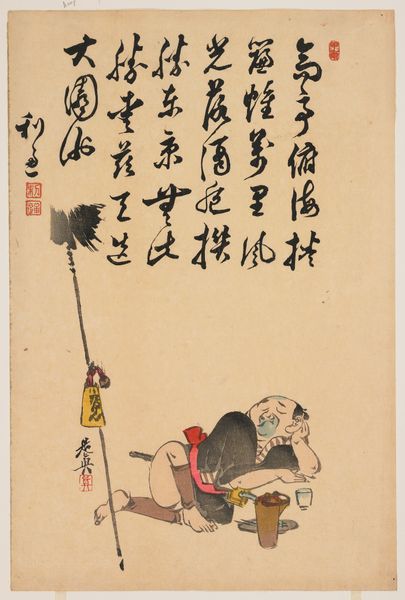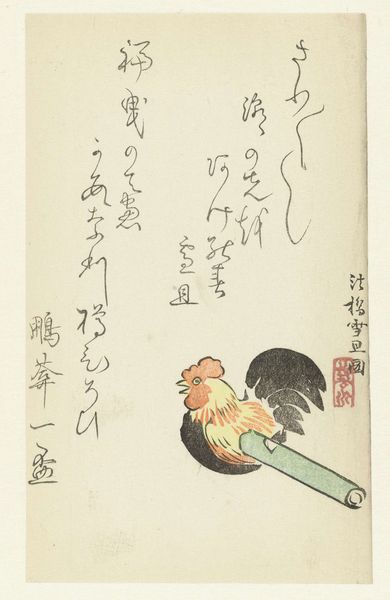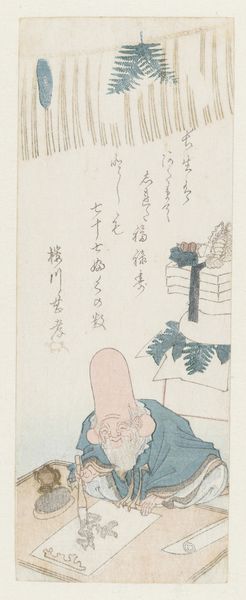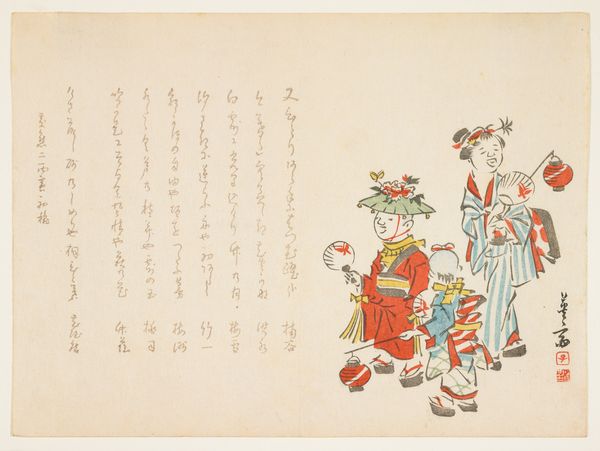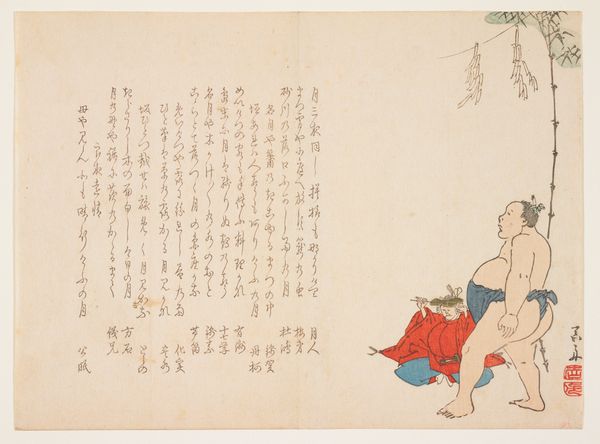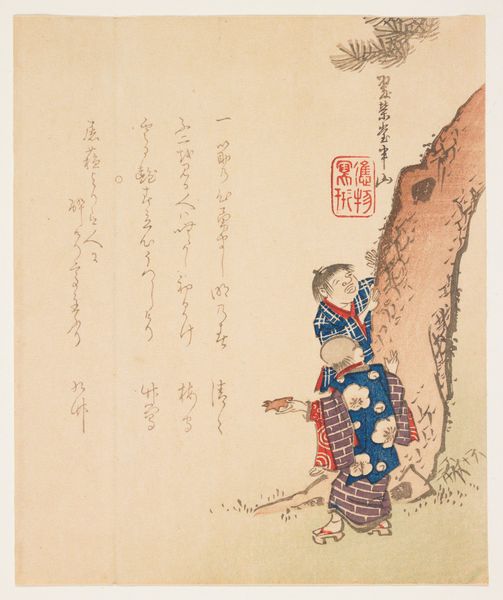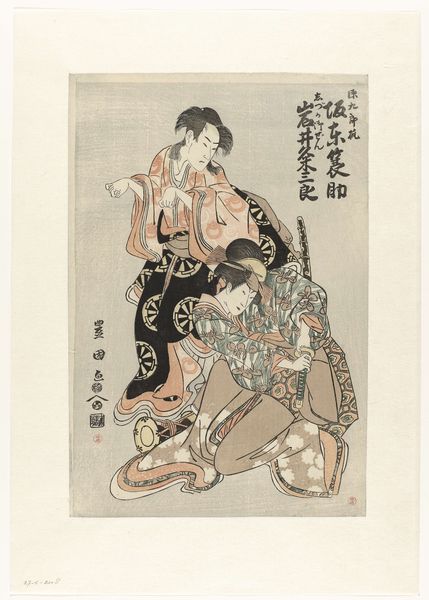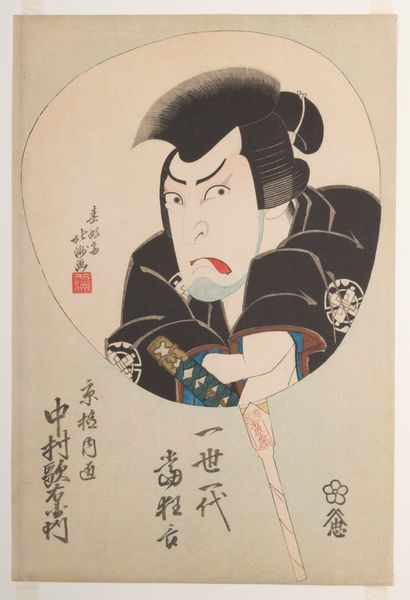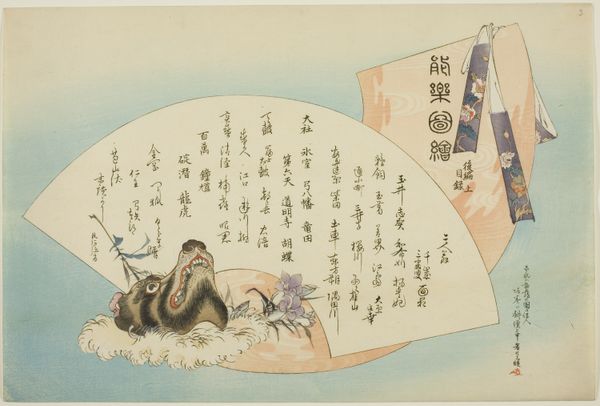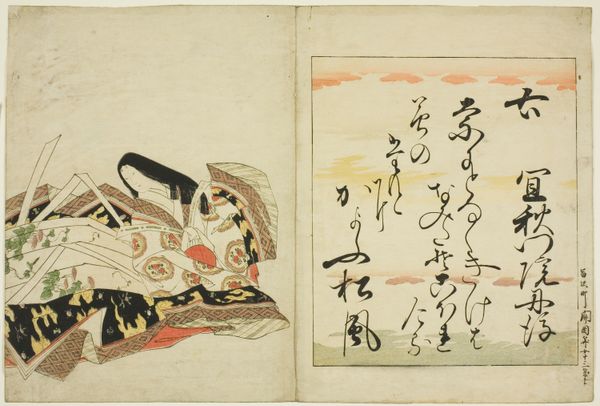
print, paper, ink, color-on-paper
#
portrait
# print
#
asian-art
#
ukiyo-e
#
japan
#
figuration
#
paper
#
ink
#
color-on-paper
#
sketchbook drawing
#
miniature
Dimensions: 14 1/4 x 9 1/2 in. (36.2 x 24.1 cm) (image, sheet)
Copyright: Public Domain
Curator: Let's examine this 19th-century color woodblock print by Shibata Zeshin, held here at the Minneapolis Institute of Art, titled "(Fukurokuju and Daikoku gods)". Editor: The composition is arresting; an incredibly long-headed figure towering over a squat companion, calligraphy swirling above them, it’s quite whimsical and humorous. Curator: Indeed. Shibata Zeshin worked during a transformative period in Japanese art history. This print blends traditional Ukiyo-e themes with new approaches influenced by Western art and the burgeoning print market. Note how the deity Fukurokuju, associated with wisdom and longevity, interacts with Daikoku, a god of wealth and prosperity. These figures represent the kind of folklore that appealed to a broad public audience. Editor: I am interested in the materiality. Zeshin's application of ink on paper is striking. Look at the expressive lines, capturing the flowing robes and distinct features of each god. The rough texture created through the woodblock printing process is so palpable, connecting us to the physical act of its production, a more democratic way to put images in the public eye compared to paintings only accessible to the upper class. Curator: Precisely. Prints like these democratized art consumption, offering affordable imagery reflective of popular beliefs and values to a wide audience during the Meiji era. It reflects how printed media impacted society. Editor: You see it made by and for common folks, unlike temple paintings made by master painters for other elites. Curator: Zeshin’s masterful blend of artistic traditions, from the high-art calligraphy, the mythological themes of the subject and commercial imperatives really demonstrate the fluidity and changing circumstances for artists and craftspeople during that time. Editor: And how the printing press altered production and labor and its implications to artistic hierarchy. What I’m looking at isn’t simply an image but the means of distributing that imagery, engaging in and with popular culture, in essence. Curator: Viewing "Fukurokuju and Daikoku gods" allows us to consider the intersection of artistic skill and mass production during an era that radically changed cultural expression. Editor: Yes, seeing the materiality and labor invested brings into sharp focus art’s ability to connect with diverse audiences in everyday life, which makes me enjoy the image and Zeshin’s sense of humor more!
Comments
No comments
Be the first to comment and join the conversation on the ultimate creative platform.
